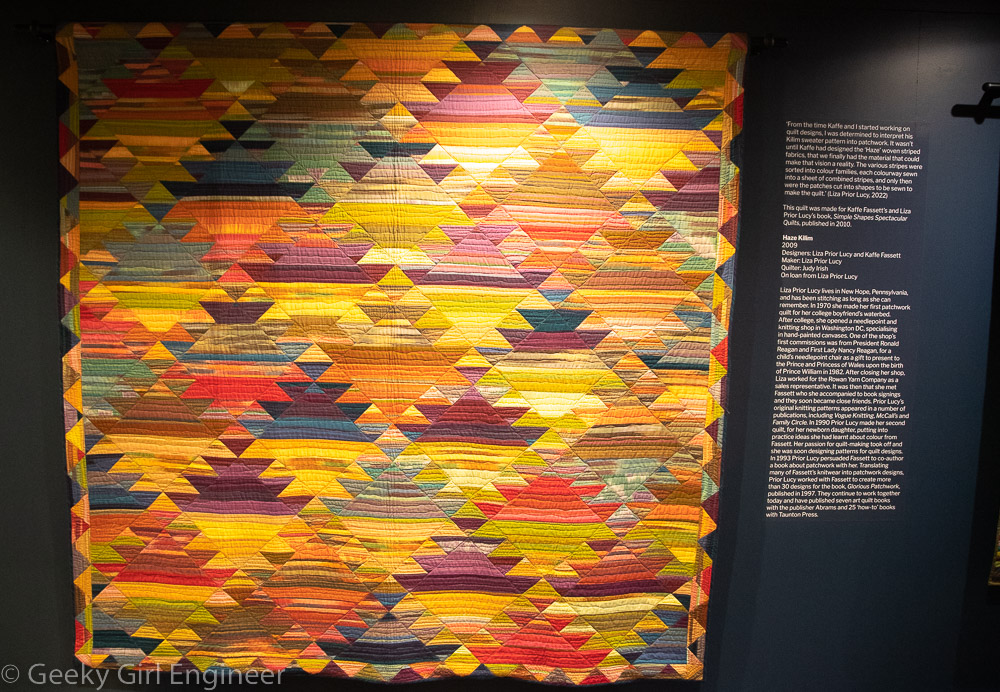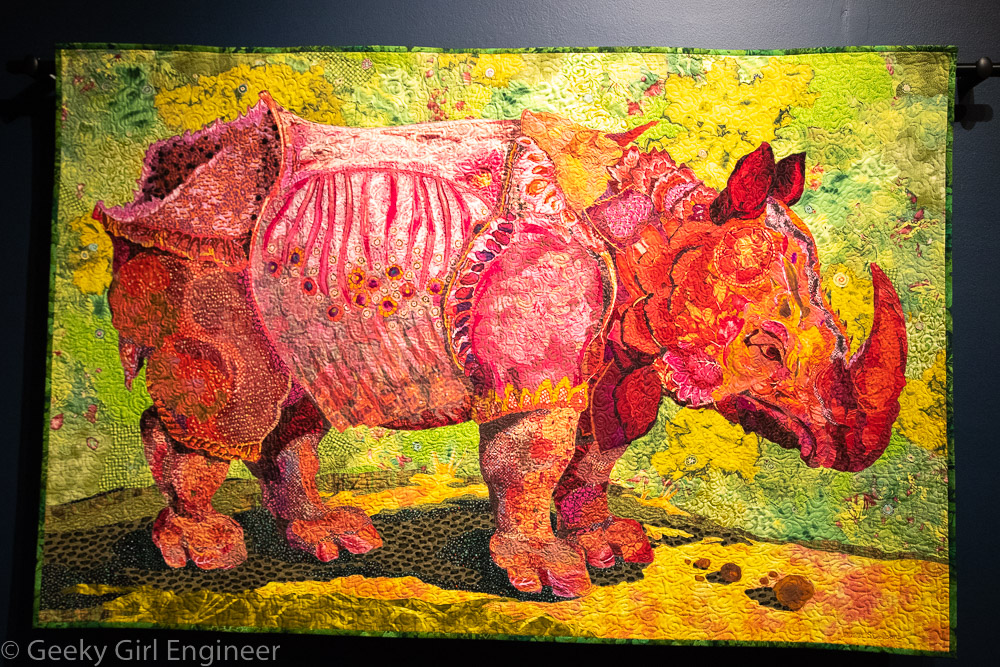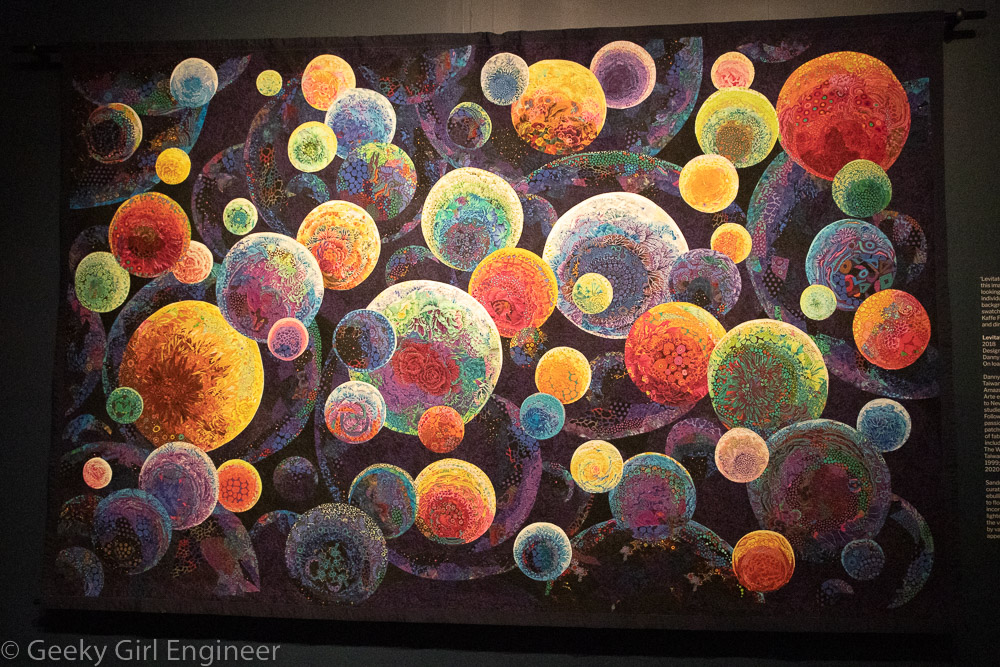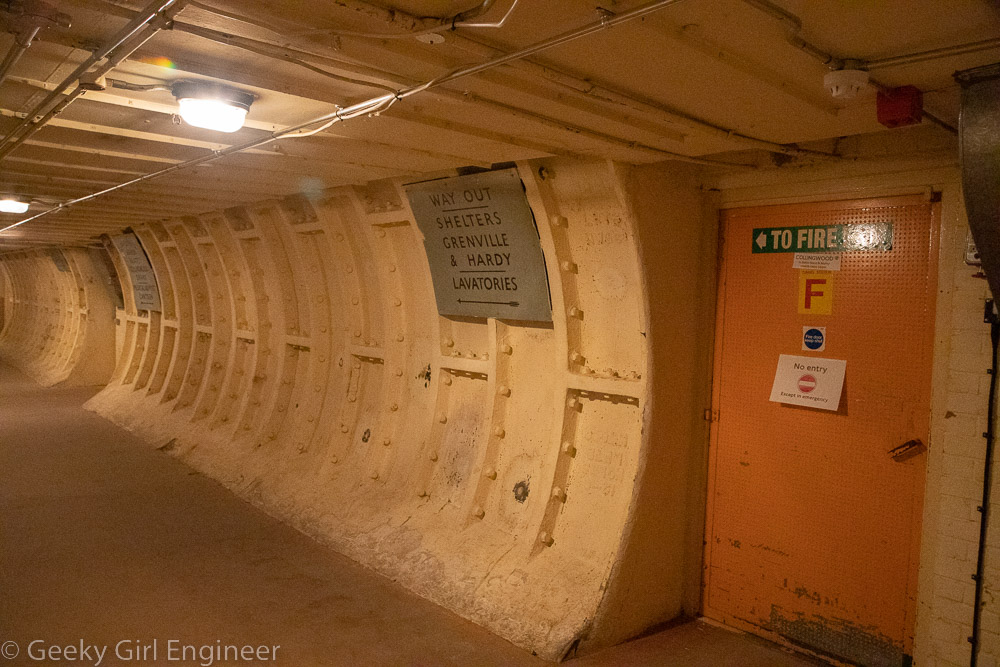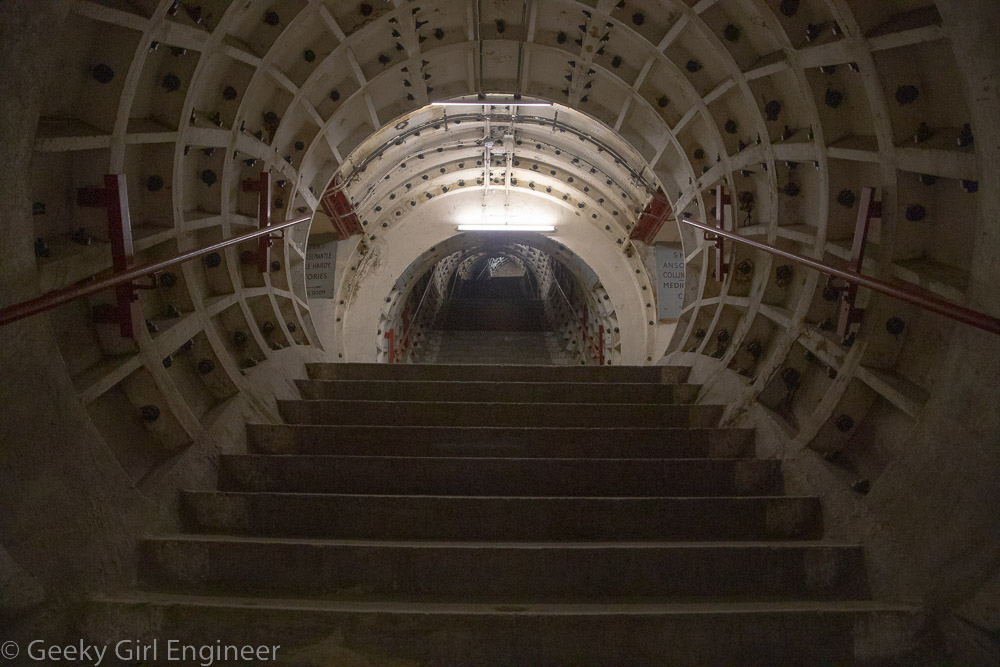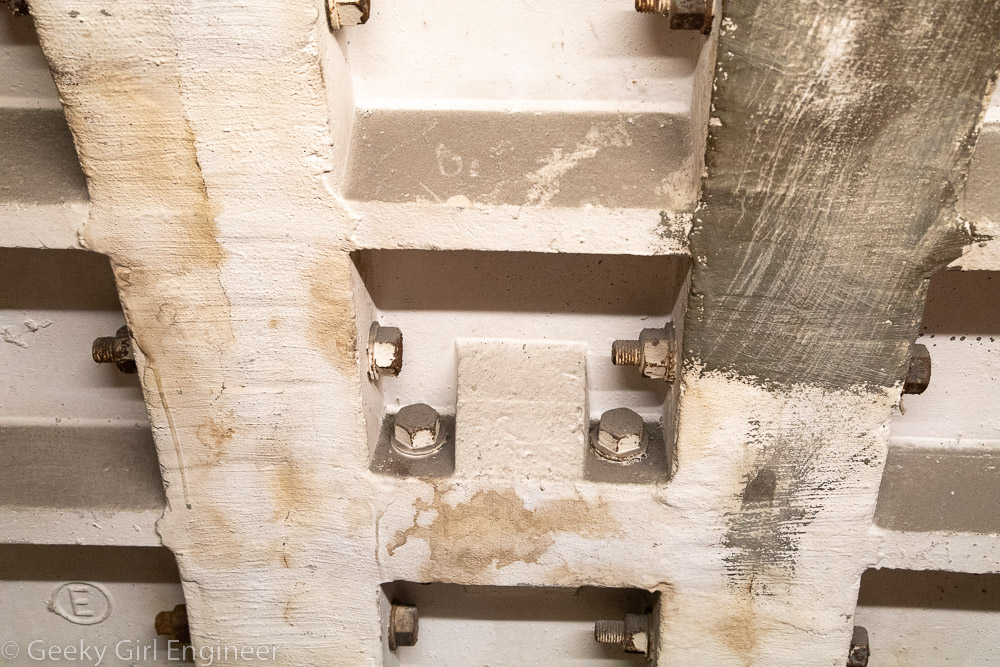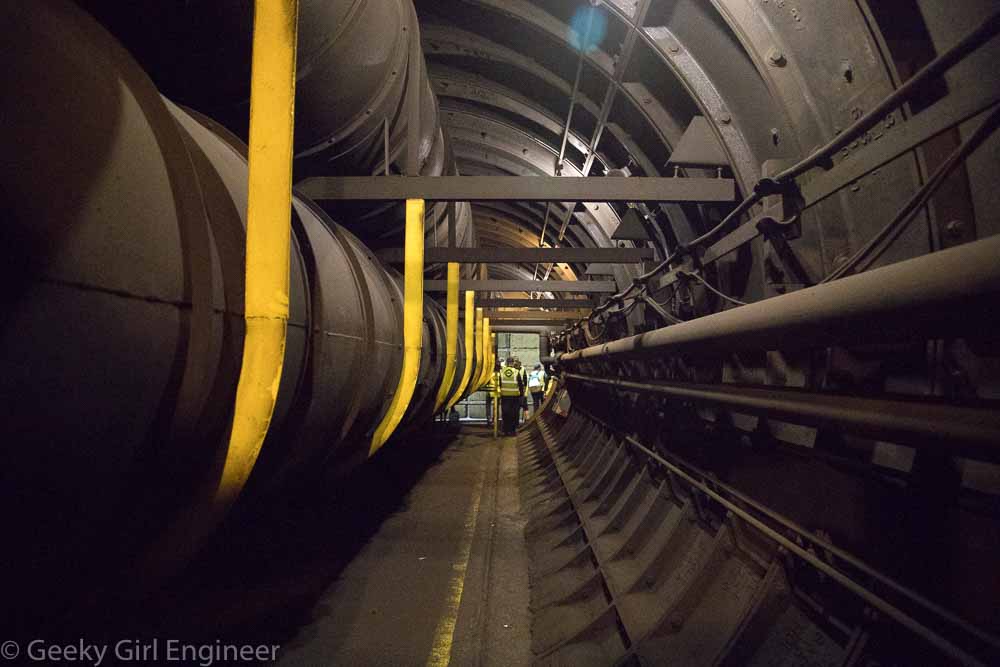I’m in London, and before traveling here, I heard about a great exhibit that I put on the top of my to do list. London’s Fashion and Textile Museum has a temporary exhibit called Kaffe Fassett: The Power of Pattern. The exhibit explores Fassett’s world, with original artworks from invited makers as well as Kaffe Fassett and Brandon Mably and Philip Jacobs. It also has textiles works, photographs and archival material to further educate on his work. I love many of his fabrics, and the first quilt I created was with his fabric. Thus, I knew I would like this exhibit.
The exhibit is wonderful. I spent the most time studying the works of art by artists using Kaffe Fassett textiles. They are wonderful, and some of them are just breathtaking. I spent quite a bit of time studying them trying to understand how they were created. They inspired me to want to create my own art although I am not skilled enough yet to create works like the ones I saw. Below are some photos of some of the works that most captivated me.

